In the ever-evolving landscape of online retail, the significance of shopping search engines cannot be overstated. As consumers increasingly turn to digital platforms for their shopping needs, businesses are presented with a multitude of opportunities to enhance visibility, attract customers, and drive sales. The impact of shopping search engines on the e-commerce ecosystem is not just anecdotal; it’s backed by compelling statistics that underscore their pivotal role in shaping the future of retail.
Statistical Snapshot:
- According to Statista, global e-commerce sales are projected to reach a staggering $6.4 trillion by 2024, highlighting the expansive nature of the online marketplace.
- eMarketer reports that 73% of all e-commerce sales in 2021 were made through a mobile device, emphasizing the growing importance of mobile-friendly platforms, including shopping search engines.
- A study by Think with Google reveals that 50% of online shoppers are more likely to make a purchase from a brand they have never heard of if the information is personalized to their preferences—a key aspect facilitated by shopping search engines.
What is a Shopping Search Engine?
A shopping search engine is a valuable tool for consumers, offering a centralized platform to compare prices, shipping options, and services from various retailers. The ultimate objective is to assist shoppers in identifying the merchant providing the most favorable deal.
Leveraging shopping search engines proves highly advantageous for e-commerce merchants. These platforms attract individuals actively interested in making purchases, allowing merchants to showcase their products and compete based on pricing.
Unlocking the Benefits: Shopping Search Engines for E-commerce Companies
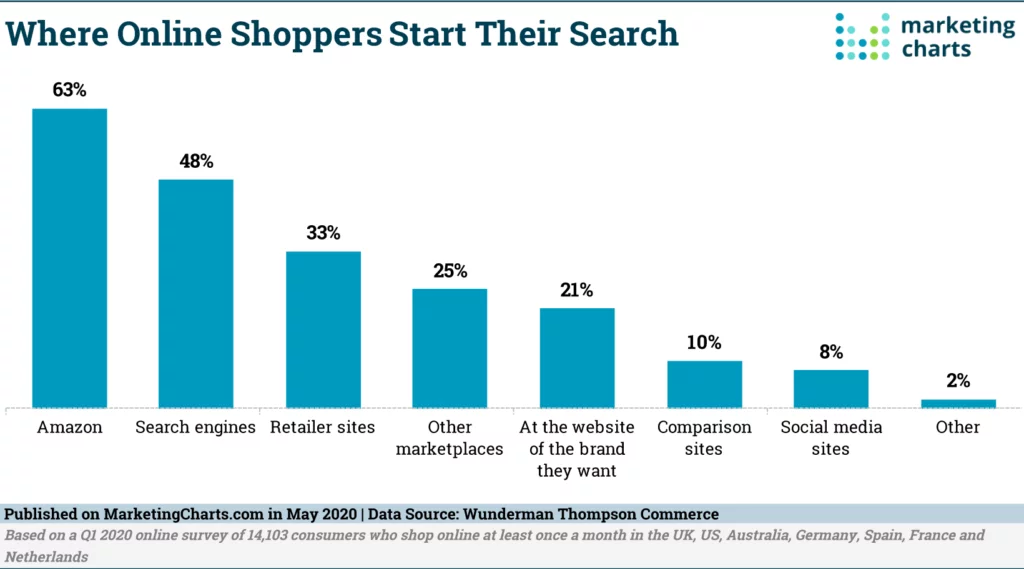
Shopping search engines offer numerous advantages, including:
- Extended Reach: By featuring your products on shopping search engines, you expand your customer base beyond your website, reaching potential clients who may have yet to discover your brand.
- Enhanced Conversions: Potential customers are more likely to click through to your website after encountering product images, pricing details, and other relevant information on a shopping search engine, increasing the likelihood of conversions.
- Competitive Insight: Use shopping search engines to identify and monitor competitors in a rapidly evolving market. This will help you stay informed about emerging players and market trends.
- Ownership of Customer Relationship: Unlike marketplaces where customers become tied to the platform, shopping search engines allow you to establish a direct relationship with customers, fostering opportunities for repeat business.
- Strategic Planning with Insights: To tailor your strategy, leverage online shopping statistics, such as usage patterns on price comparison websites. Understanding your audience, as depicted in the provided chart on price comparison website usage in the United Kingdom, is essential for informed business decisions.
Top Shopping Search Engines of 2024:
1. Google Shopping: Your Ultimate Shopping Companion
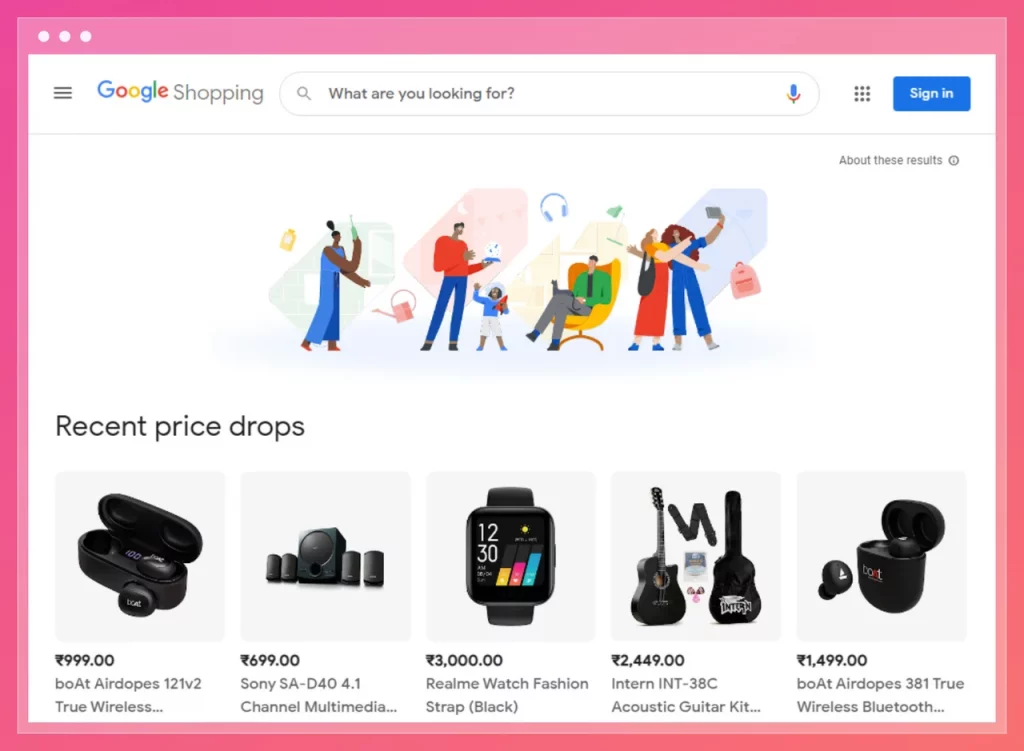
Google Shopping, formerly known as Google Product Search or Froogle, stands as a premier shopping search engine offering users a vast array of online shopping possibilities. Recognized as one of the largest and most popular tools, Google Shopping facilitates seamless item searches across various online platforms, empowering users to compare prices effortlessly.
Pros:
- Utilize filters like “search nearby” for local item searches with precise addresses and map results.
- Enhanced visibility on Google’s Search Engine Results Page, appearing in text-only, shopping, and website results.
Cons:
- Strict shipping regulations may pose challenges for businesses.
- Retailers may face challenges if their prices are not competitive.
Pricing Model:
Operates on a fixed percentage markup on the cost-per-click (CPC) paid in the Google auction for placing Shopping ads.
Unique Offerings:
Google Shopping provides free Google-quality consulting services, making it a comprehensive and valuable resource for consumers and businesses alike.
Learn about customer shopping journey here.
2. Bing Shopping: Navigating a Unique Shopping Experience
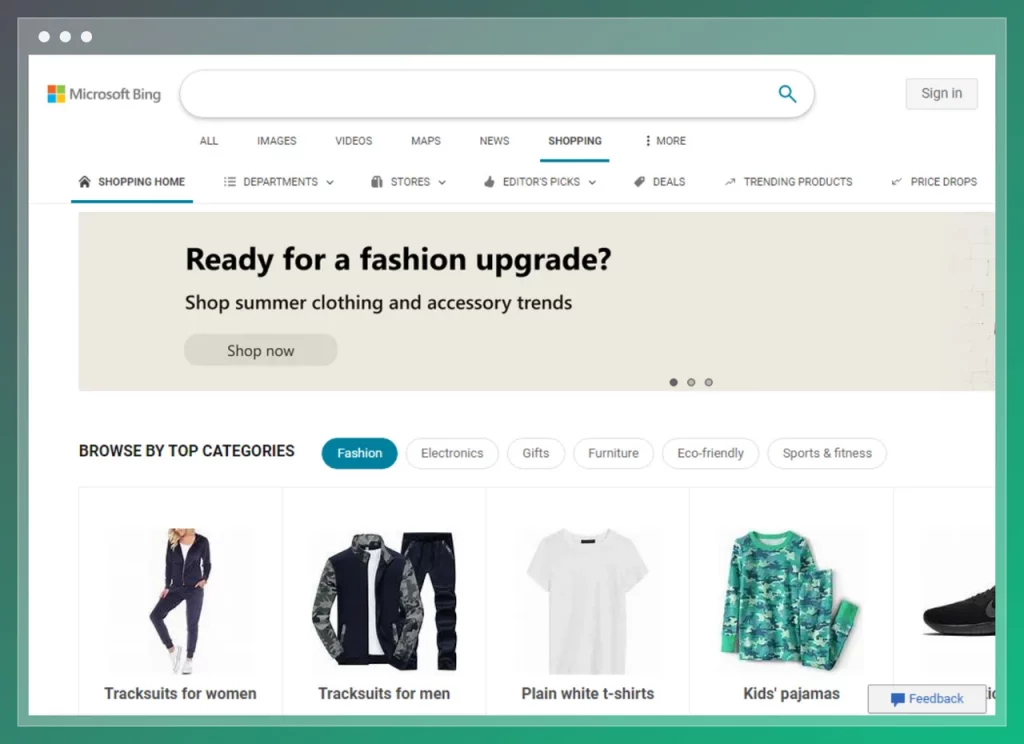
Bing Shopping offers a unique shopping experience, serving as a comprehensive product search and discovery service. With a dynamic homepage and a focus on fashion, Bing Shopping consolidates items from various merchants onto a single page, providing users with comprehensive product results.
Pros:
- Reduced competition due to a smaller user base, leading to cost-effective cost-per-clicks (CPCs).
- Seamless integration with Google Shopping, allowing businesses to use their Google Shopping feed on Bing.
Cons:
- A smaller search pool on Bing may limit potential customers.
- The interface is considered more complex and less adaptable compared to some competitors.
Pricing Model:
Operates with a bidding auction and offers free clicks from the Product Listings section of the Shopping tab, providing cost-effective options for retailers.
Navigate the world of online shopping with Bing Shopping, where strategic advantages meet user-friendly features for consumers and businesses.
3. Pinterest: Unleashing the Shopping Potential
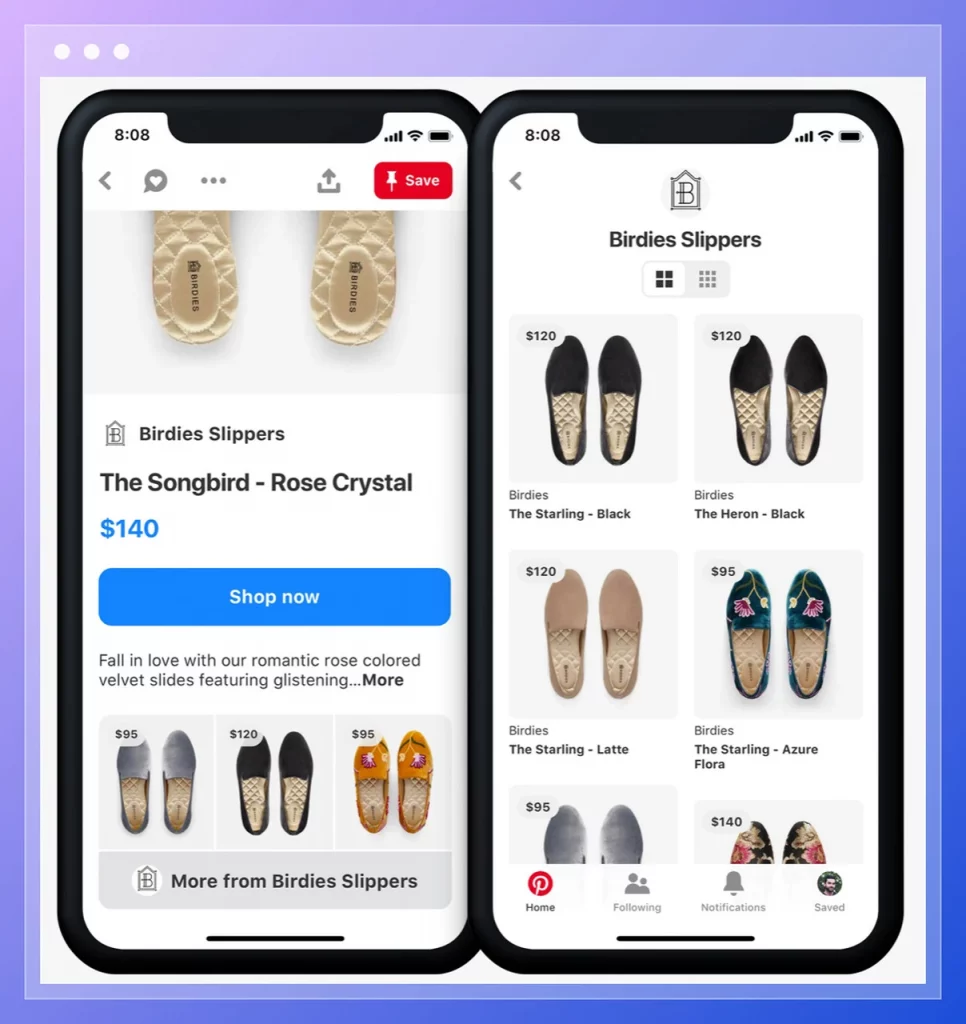
Pinterest, often underestimated, reveals its potential as a powerful platform for brand recognition, clicks, and sales. Beyond its role as a social network, Pinterest shines as a shopping search engine, facilitating swift product searches and comparisons.
Pros:
- User-friendly design and easy navigation for quick product searches and comparisons.
- Filters accelerate searches, providing instant price information for each product.
Cons:
- Pinterest’s audience caters to a specialized target, potentially limiting the reach to a specific demographic.
- Strict quality and size standards for pinned images may pose challenges for some businesses.
Pricing Model:
Pinterest for e-commerce is free to use, offering businesses an accessible and cost-effective platform to enhance their online presence.
4. Shopzilla: Elevating Your Shopping Experience
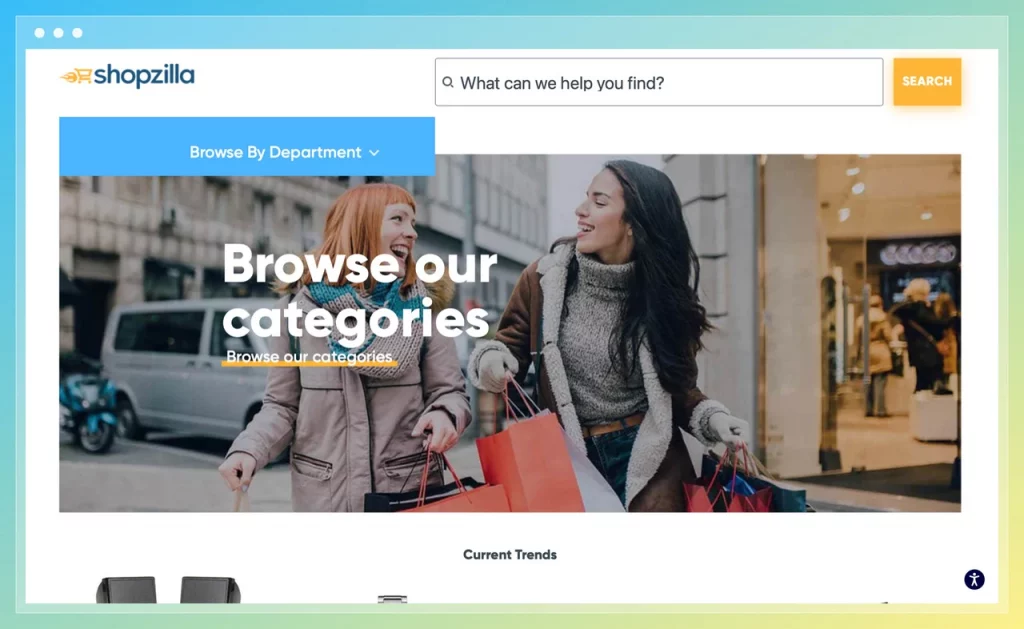
Shopzilla emerges as a top-notch shopping search engine, providing users with a delightful shopping experience. With a visually engaging website featuring a search bar and joyful shoppers, Shopzilla enables users to perform direct searches or browse by department.
Pros:
- Bidding flexibility at category, sub-category, and product levels.
- Smart pricing adjusts CPC based on traffic quality.
Cons:
- Products classified as “Catalog” or “Non-catalog” based on manufacturer SKU availability.
- The minimum bid requirement is $4 for all products.
Pricing Model:
Operates on a pay-per-click (CPC) approach, requiring a $50 refundable deposit for account creation. The CPC rate varies by category and adjusts throughout the year.
5. Yahoo Shopping: Rediscovering Shopping Brilliance
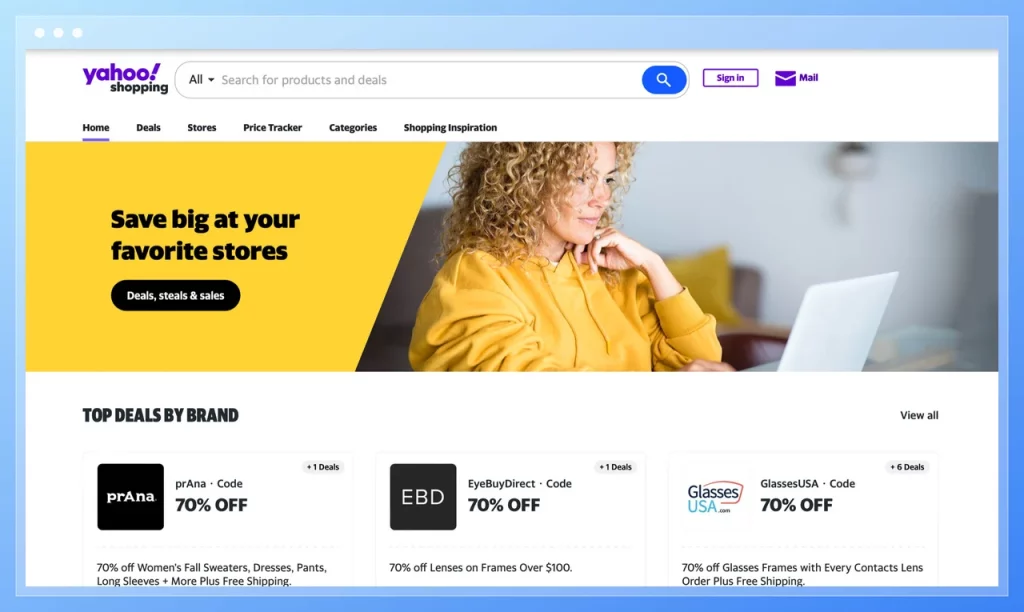
Yahoo Shopping, though not as ubiquitous as in its prime, still stands as a valuable platform. The homepage, featuring enticing deals and a user-friendly search bar, caters to a diverse audience.
Pros:
- Prominent and easily accessible search bar for streamlined shopping.
- Efficient inventory management, accommodating businesses of all sizes.
- Seamless integration of discounts and codes to prompt quick customer actions.
- Yahoo manages shipping rate calculations, providing clarity on sales costs.
- Diverse payment gateway options for enhanced purchasing flexibility.
Cons:
- Lower traffic compared to peak popularity may limit the customer pool.
- Reduced traffic should be considered, despite generally high merchant satisfaction.
Pricing Model: Featuring items on Yahoo involves purchasing Bing Shopping clicks, granting access to two comparison engines. The cost-per-click fee ranges from 0.5¢ to $1, dependent on product categorization.
6. Shopmania: Elevate Your Shopping Comparison Experience
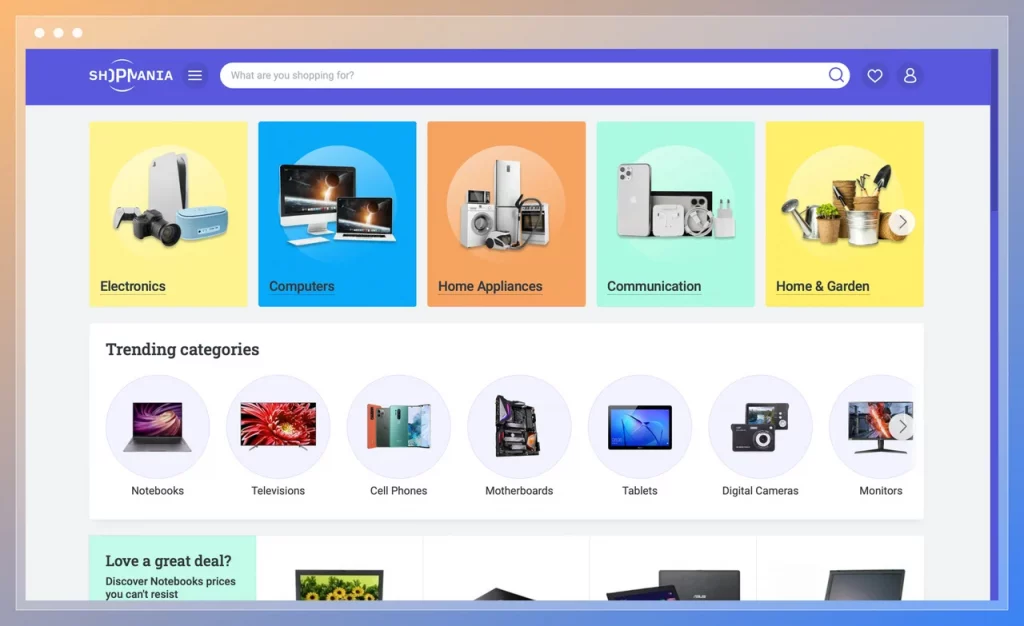
Shopmania offers a captivating shopping comparison experience, featuring diverse categories like electronics, computers, communication, home & garden, and trending items.
Pros:
- Wide-ranging categories ensure visibility for diverse products.
- Excellent design with vibrant categories seamlessly transitioning to results pages.
- Merchants enjoy total control over campaigns with efficient tools.
- Robust reporting system for tracking performance history and informed decision-making.
Cons:
- Limited notable discounts in online shops and products.
Pricing Model: Shopmania operates on a pay-per-click (CPC) model, aligning with standard shopping search engine practices. Merchants can also benefit from free selling on Facebook upon signing up.
7. Wanelo: Unleashing Social Shopping Brilliance

Wanelo, a social shopping platform, boasts over 12 million goods from 300,000 retailers. A green-filtered screenshot showcases its unique features, login buttons, and a variety of featured items.
Pros:
- Introduction of “Stories” for showcasing specific goods and creating a unique brand voice.
- Ability to follow users and shops, fostering engagement and expanding visibility.
- Strategic use of hashtags enhances item discoverability.
- Sharing buttons for social media facilitate product and page promotion.
Cons:
- Eligibility for selling on Wanelo may be challenging to understand.
- Limited availability of assistance from Wanelo, according to some user experiences.
Pricing Model: The Wanelo Sales Channel is free to use. Upon authorization to sell, a 17.1% fee is applied to completed orders, covering both the item’s cost and delivery, with an additional 2.9% processing fee on the total order cost.
8. PriceGrabber: Unveiling Shopping Possibilities
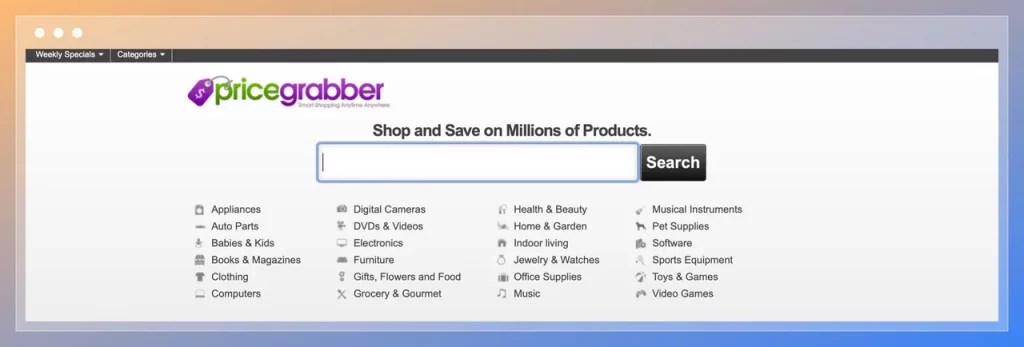
Established in 1999, PriceGrabber is a seasoned shopping search engine and distributed content commerce business. Owned by Connexity, it provides access to Connexity’s retail performance marketing network.
Pros:
- Featured items and categories for increased visibility.
- Compatibility with the same feed file used in Google Product Listing Ads.
- Media alternatives like Featured Merchant and Banner Placements.
- No minimum CPC bidding model, allowing bids as low as $0.01.
- Bulk data feed upload via FTP for merchant convenience.
Cons:
- Support system responsiveness may need improvement.
Pricing Model: Listing products on PriceGrabber requires a $50 deposit, with a minimum ad spend of $700 and a logo display cost of $0.10 per ad.
Conclusion:
The e-commerce industry has reached unprecedented heights, providing customers with a plethora of alternatives to explore. Fortunately, shopping search engines have emerged as valuable tools, simplifying the daunting task for buyers.
These engines facilitate item comparisons, helping consumers uncover the best deals and saving them substantial time. Consequently, the usage of shopping search engines has witnessed a notable surge.
It’s crucial to recognize that there isn’t a one-size-fits-all approach for increasing conversions, whether through shopping search engines, advertisements, or popups. The effectiveness of these methods varies, and businesses should assess what works best for their specific offerings.
Even if a chosen shopping search engine doesn’t yield significant conversions, there’s no need for discouragement. Experimenting with different engines, incorporating social proof tools, utilizing subscription management software, or creating quick popups can offer alternatives and opportunities for improvement.
Now it’s your turn. Have you ever employed a shopping search engine for online purchases? Share your experiences in the comments below!
FAQs on Shopping Search Engines:
How Do Shopping Search Engines Work?
Shopping search engines function similarly to regular search engines for consumers. However, they present products side by side, allowing users to compare prices. On the business side, each shopping search engine operates uniquely. Typically, businesses pay a fee, submit relevant information, and list their products. These items then appear in searches alongside comparable products.
How Can I Get My Website Listed on Shopping Search Engines?
To get your website listed, you may need to provide a shopping search engine-compatible product feed containing the required information. Some e-commerce platforms offer tools that automatically generate product feeds based on the online store’s content. However, optimizing product names, descriptions, and keywords is essential for maximizing sales.
How Much Does it Cost to Get Listed?
The cost of getting listed on shopping search engines varies. While some platforms offer free listings, others operate on pay-per-click or cost-per-action systems. Pay-per-click systems require operating within a specific budget, with charges based on clicks. Cost-per-action systems involve payment to the search engine only when a desired result or conversion occurs.



